Warm, well-balanced rice bowls are very satisfying, especially when they are topped with salmon that has been cooked to perfection, vibrant vegetables, and a tasty sauce. One of the healthiest and most adaptable dishes you can make is the salmon rice bowl, which provides a satisfying combination of complex carbohydrates, fiber, healthy fats, and protein in a single, delectable serving.
This dish fits all the requirements for a pescatarian diet, clean eating, blood sugar control, or simply quick, weeknight meals. Everything you need to make the ideal salmon rice bowl is covered in this post, from the nutritional advantages and preparation advice to simple customization and typical blunders to avoid.
A Salmon Rice Bowl: What Is It?
The components of a salmon rice bowl are layered and include:
- Steamed rice (white, brown, or cauliflower rice) as a foundation
- A serving of cooked salmon that has been pan-seared, baked, air-fried, or grilled
- Greens, avocado, edamame, cucumbers, carrots, and other fresh or cooked vegetables
- Extra toppings such as pickled vegetables, sesame seeds, or sauces are optional.
It’s filling, nutritious, and adaptable; consider it a blank canvas for taste and nutrition.
How to Make the Ideal Salmon Rice Bowl
Ingredients (2 servings)
Regarding the salmon:
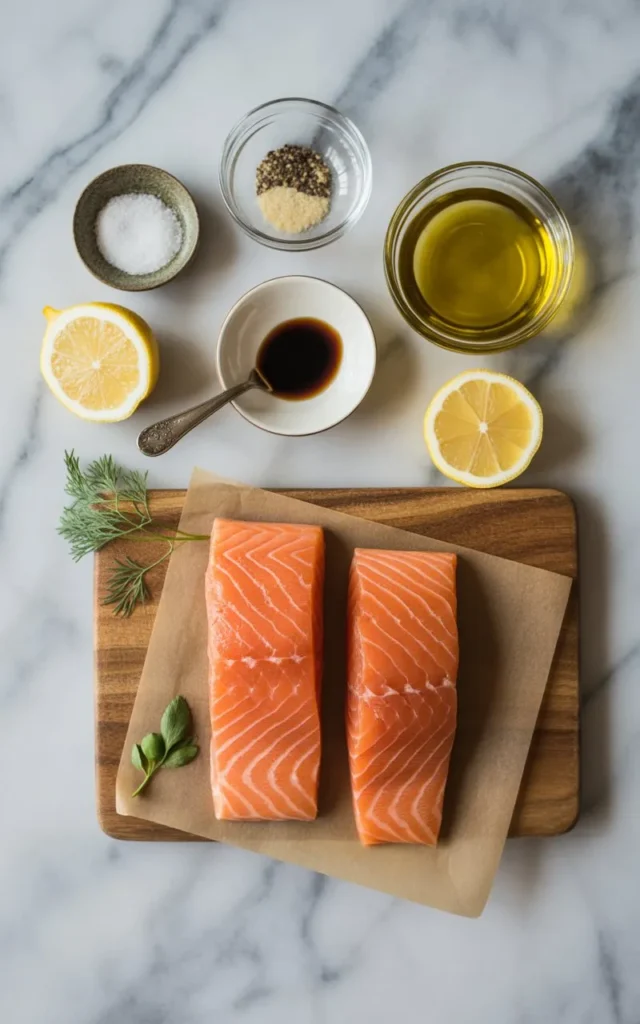
Regarding the Rice Base:
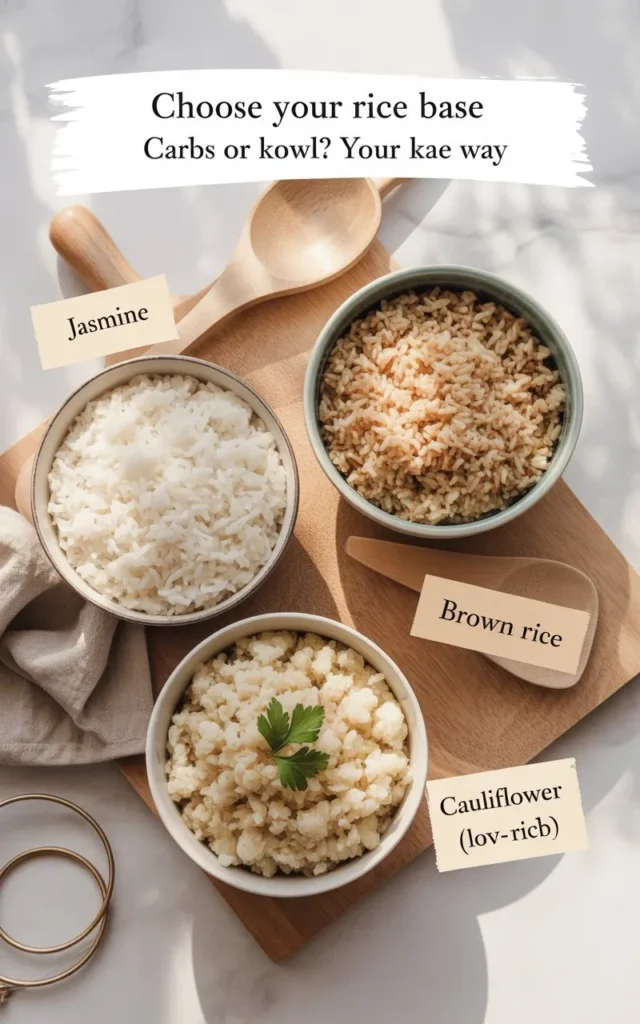
One cup of cooked white jasmine rice or brown rice (or, for a low-carb option, cauliflower rice)
Regarding the vegetables and toppings:
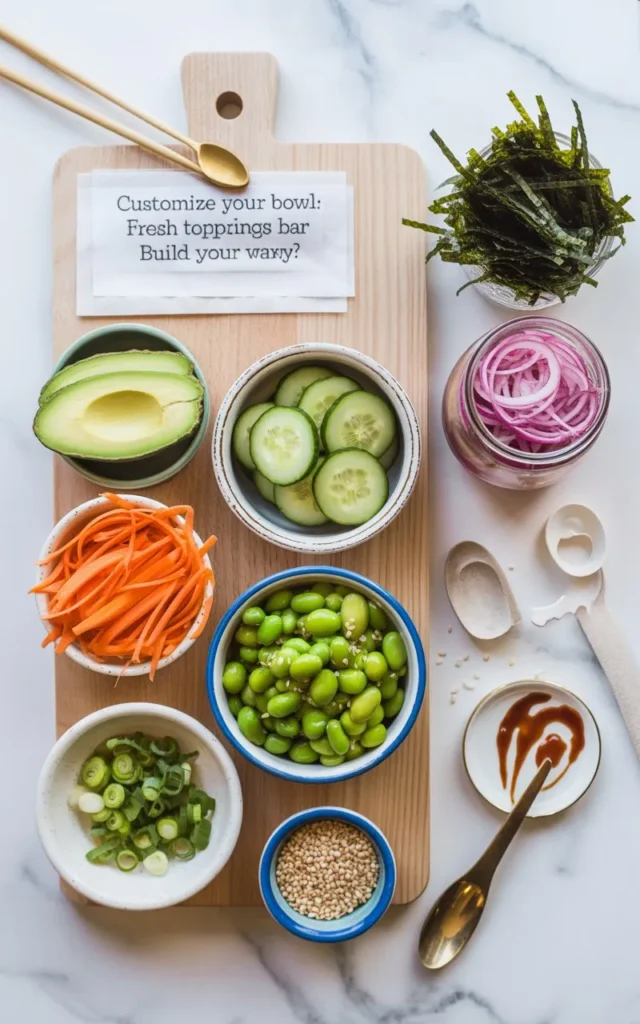
Choices for Sauce:
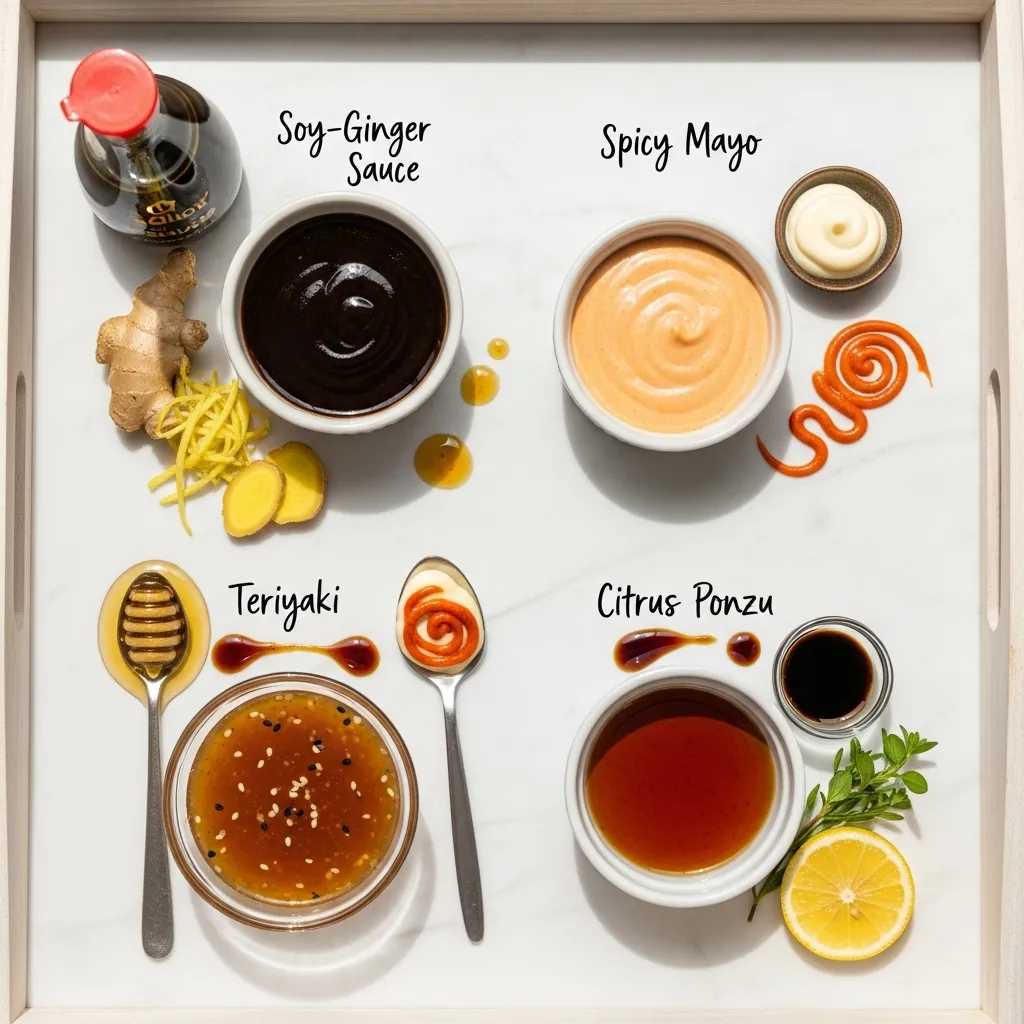
Directions

Prepare the salmon. Use lemon juice, salt, pepper, and garlic powder to season the salmon. In a skillet, heat the olive oil over medium-high heat. If the salmon fillets are skin-on, place them skin-side down and cook for 4 to 5 minutes. Cook for a further three to four minutes after flipping, or until cooked through and flaky.
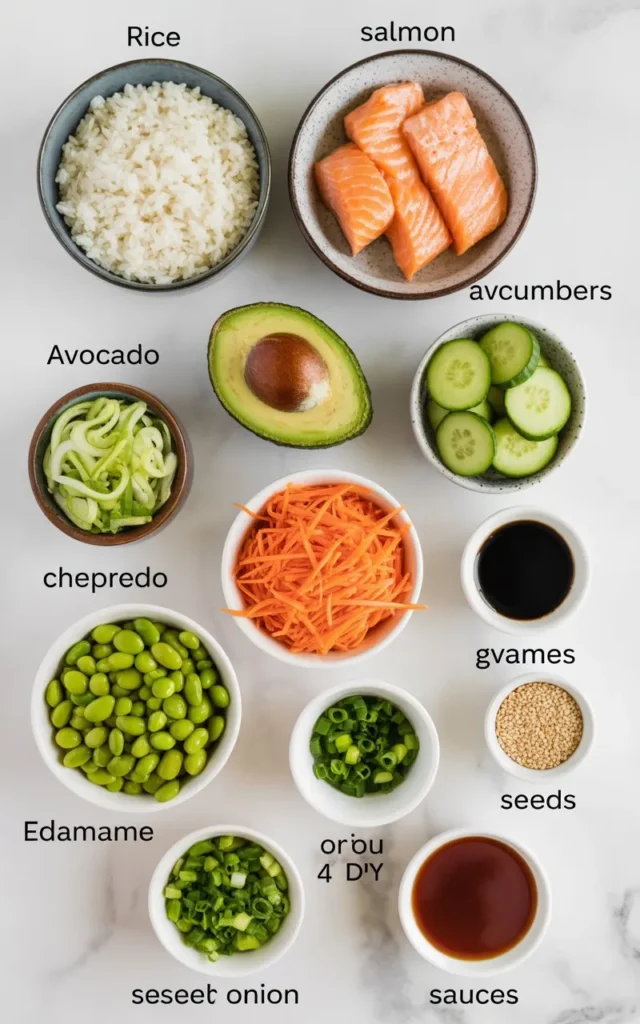
Serve with sauce added. Pour your favorite sauce over the bowl and serve right away.
A Salmon Rice Bowl’s Health Benefits
A salmon rice bowl is a nutritional powerhouse in addition to being delicious. Let’s dissect the health benefits:
1. Packed with Omega-3 Fatty Acids
One of the best sources of EPA and DHA, the omega-3 fatty acids that support:
- Memory and brain health
- Heart health
- reduction of inflammation
- Balance of hormones
2. Superior Protein
About 20–25g of protein are provided by each serving of salmon, which aids in:
- Muscle recuperation
- Contentment and managing weight
- Stability of blood sugar
3. Antioxidants and Fiber
Carrots, cucumbers, and edamame are examples of colorful vegetables that add:
- Digestive fiber
- Vitamins A, C, and K for healthy skin and immune systems
- Using phytonutrients to lessen oxidative stress
4. Equilibrium Macronutrients
This bowl of rice, vegetables, and healthy fats from avocado or sesame oil offers:
- Complex carbohydrates for long-term energy
- Healthy fats for the heart and brain
- Protein to sustain fullness
Tips for Meal Prep
Salmon rice bowls are ideal for meal planning because they’re:
- Easy to put together
- Excellent for leftovers
- Simple to alter every day
Get Ready and Store Like an Expert:
- Prepare the rice and salmon ahead of time.
- Keep each ingredient separately in the refrigerator for up to four days.
- For optimal flavor, assemble fresh every day.
- Store sauces in small containers so you can drizzle them right before eating.
You’ll Love These Bowl Variations
Use these bowl twists to add some excitement to your meals:
1. Asian-Style Bowl
- Add wasabi peas, seaweed, and pickled ginger.
- Make use of teriyaki glaze and jasmine rice.
2. Keto/Low-Carb Bowl
- Use cauliflower rice instead of rice.
- Add more avocado and egg on top.
- Substitute coconut aminos for soy.
3. Bowl of Spicy Poke
- Use uncooked, sushi-quality salmon that has been marinated or cured.
- Add seaweed salad, jalapeños, and spicy mayo on top.
4. Salmon Bowl with Tex-Mex
- Use brown rice with lime and cilantro.
- Add the avocado crema, pico de gallo, corn, and black beans.
5. Bowl of Mediterranean
- Use quinoa instead of rice.
- Add tzatziki, roasted red peppers, olives, and feta cheese.
The Benefits of Salmon Bowls for Mental Concentration
The impact of food on mood and mental clarity is often disregarded. Salmon rice bowls are the perfect meal to stimulate the brain because:
- Omega-3s from salmon enhance concentration and mood.
- Rice’s complex carbohydrates gradually release glucose, providing energy.
- B vitamins and folate (found in avocado and edamame) combat fatigue.
- This type of lunch keeps you productive rather than lethargic.
Nutritional Data (approximately per bowl)
- 500–600 kcal
- 30–35g of protein
- 20–25g of fat
- 40–45g of carbohydrates
- Fiber: 6–8 grams
- 2–4g of sugar
Adapt the numbers to the type of rice, size of salmon, and toppings.
Is Gestational Diabetes Safe?
Yes, but with a few astute modifications:
- To lessen the glycemic impact, use cauliflower or brown rice.
- Sauces with added sugar, such as teriyaki, should be avoided or reduced.
- For a higher omega-3 profile, opt for wild-caught salmon.
- To slow the absorption of glucose, include more vegetables and a fat source, such as avocado.
Salmon bowls are a good choice for pregnancy nutrition, but always get advice from a physician or dietitian.
Common Errors to Steer Clear of
Here are some common mistakes and how to avoid them:
The salmon was overcooked.
It flakes badly and dries out. Aim for a medium internal temperature of 135 to 140°F.
Soggy rice
To avoid steaming the vegetables, allow the fresh rice to cool slightly before assembling.
An Unbalanced Bowl
Remember to include fiber and fat. To make a filling bowl, mix up your veggies and add avocado or seeds.
Sugary Sauces
Steer clear of store-bought sauces that contain preservatives, cornstarch, or added sugar. Create your own in a matter of minutes.
Is It Possible to Make This Bowl Plant-Based?
Indeed! Here’s how:
- Use roasted chickpeas, tempeh, or grilled tofu in place of salmon.
- Use the same sauces and vegetables.
- For protein, add a dash of chia or hemp seeds.
Plant-based substitutes taste just as good and are higher in fiber and antioxidants.
FAQ: Edition of the Salmon Rice Bowl
Q1: Can I use salmon in a can?
Indeed! Although fresh salmon has the best flavor, canned salmon that has been wild-caught and boneless is a healthy and affordable substitute.
Q2: Which rice is the best to use?
- Sushi rice or jasmine for taste
- Wild rice or brown rice are good sources of fiber.
- Cauliflower rice is low in carbohydrates.
Q3: Is it safe to consume this cold?
Of course. If you use cooked and cooled ingredients, salmon rice bowls make a great cold lunch. If you want a fresh, poke-style experience, simply do not reheat the fish.
Q4:Is it possible to freeze it?
Rice and cooked salmon can be frozen separately, but avocado and fresh vegetables cannot. Ideal for planned reassembly and batch preparation.
Q5: Is this suitable for children?
Yes, but for picky eaters, serve ingredients separately (such as in a deconstructed bowl) and use milder sauces.
Concluding remarks
A classic, adaptable, and wholesome dish that you can eat any day of the week, the salmon rice bowl is more than just a fad. It’s excellent for meal preparation, lunch, dinner, and recuperation after exercise. This bowl is a great choice for anyone looking to eat clean, cut back on carbohydrates, or increase their intake of omega-3 fatty acids.
Beautiful, nutrient-dense, and well-balanced, it’s one of the simplest ways to eat healthily without sacrificing flavor.
Are You Prepared to Make It?
If you make this Salmon Rice Bowl, please post it to Instagram with the hashtag #SmartSalmonBowl. We’d love to see what inventive sauces and toppings you use!
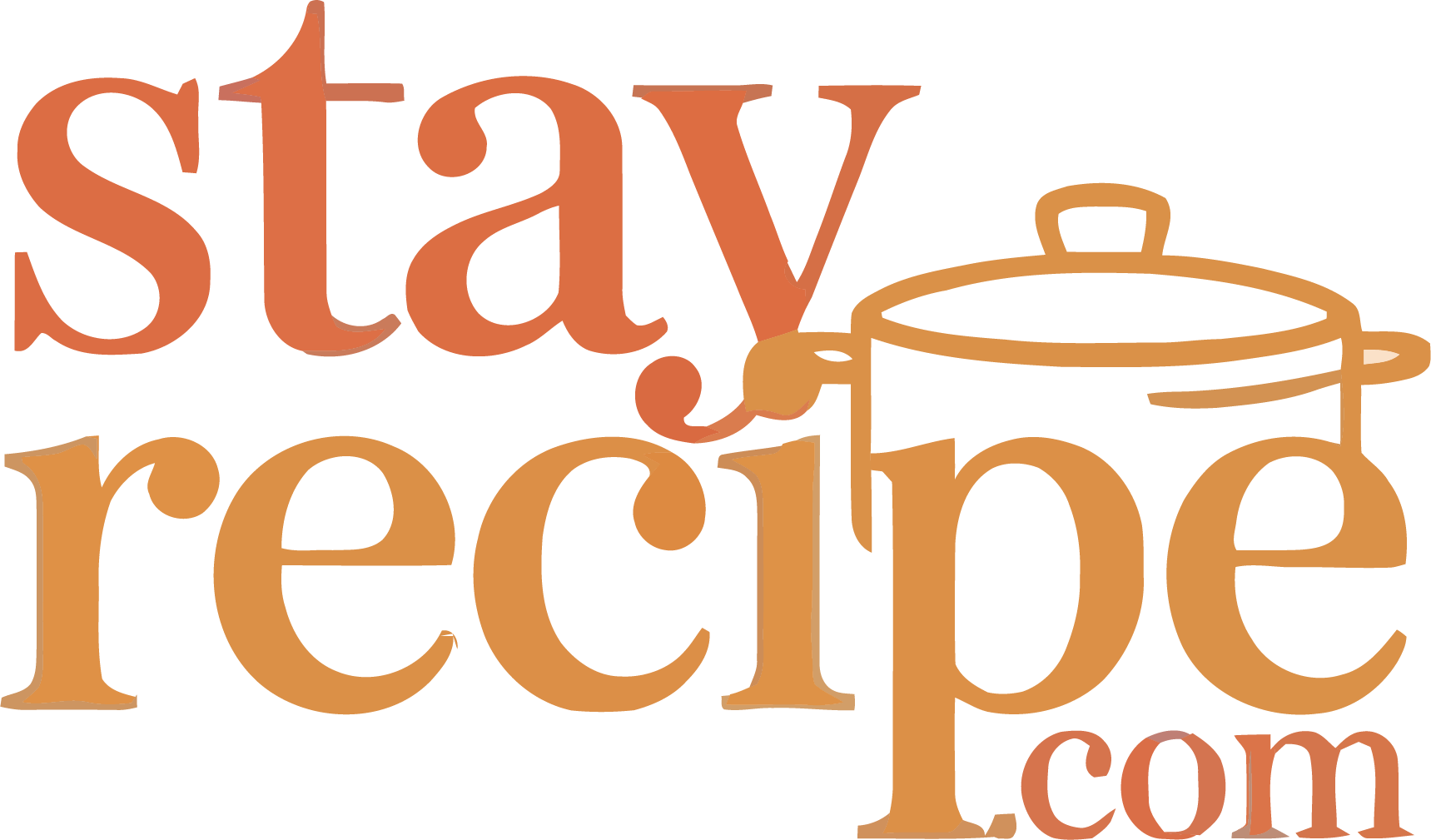
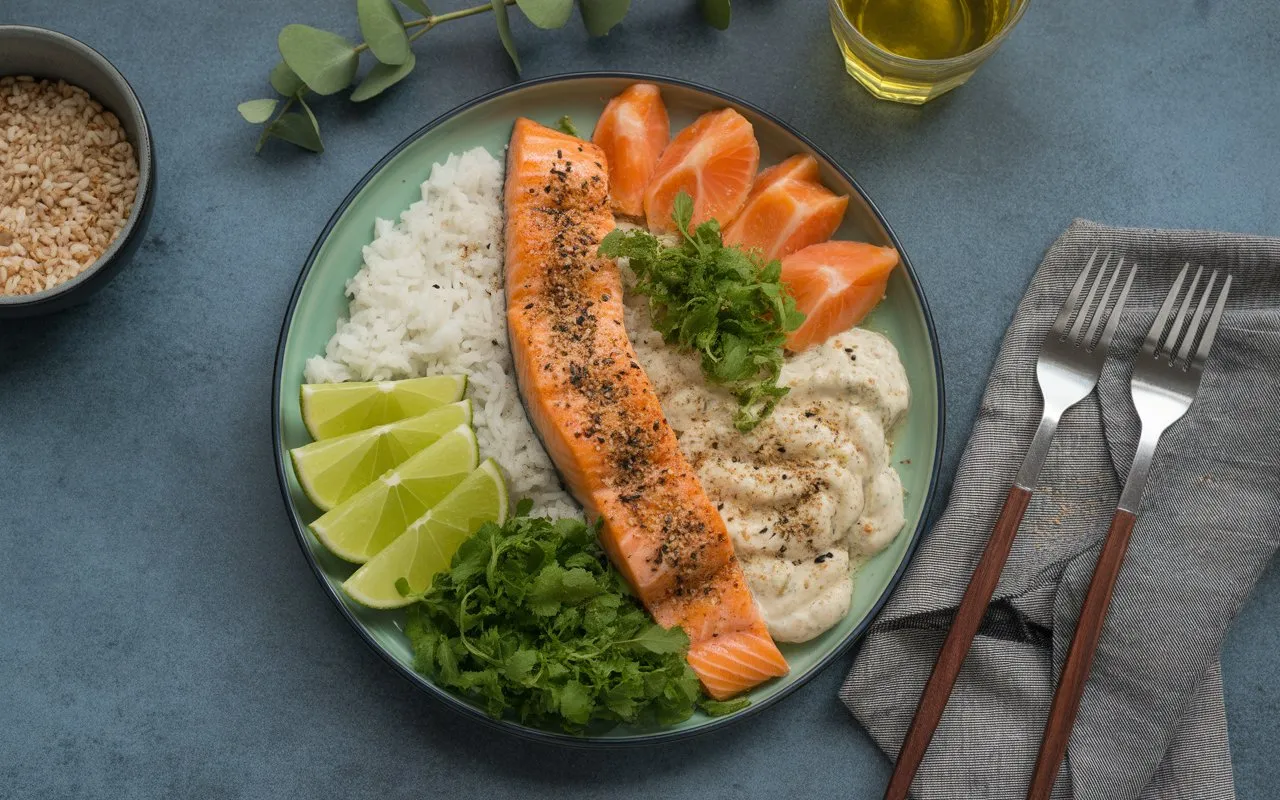
Leave a Reply